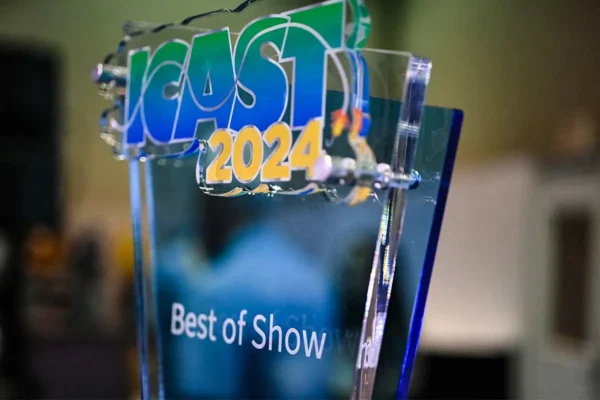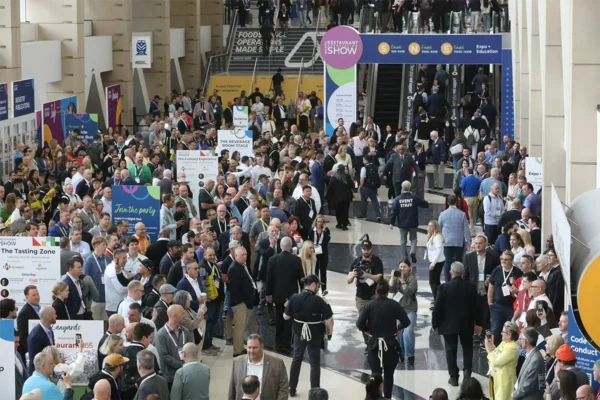by Cynthya Porter
It sounds simple enough: Ship a box of 300 buttons directly to a tradeshow venue rather than the office. It only weighs 10 pounds and can be set to arrive from the manufacturer on the first day of setup. Sounds perfect. At this point, every well-seasoned tradeshow manager reading this is shaking their head, but for the less experienced, an extra $270 invoice from the general services contractor (GSC) in order to hand over the box is a stunning and costly surprise.
But given that the vast majority of tradeshow exhibitors in the U.S. are small outfits with small budgets and limited show experience, coupled with the fact that the industry is filled with new professionals just learning the ropes, it is a scenario being played out every day across the country in the name of a much-hated practice: drayage. And for many, $270 would be getting off cheap once all the material handling fees and penalties roll in for items that must pass through the net of GSCs to reach the show floor.
In the case of the $270 box of buttons, the exhibitor was informed that they had done “everything wrong,” causing a heap of charges upon charges for the small package. So what, then, is the right way to avoid being caught in that same expensive web down the road? Below is a primer for the new folks and the little guys.
1) The fact that the page in the exhibitor kit inviting shipments to the venue doesn’t mention there will be material handling charges no matter how small the item is immaterial, at least to the GSC. Somewhere buried elsewhere in the show services manual is a material handling outline that says there is a minimum drayage charge of 200 pounds (300 at some shows) for items handled by them. It’s not their problem if you thought that form was pertaining to shipments like exhibit properties. It would apply to an envelope.
2) Packages that come from specialty carriers like UPS and FedEx can incur fees 30 percent higher or more for drayage because they require special handling compared to whole pallets of freight that can be moved with a forklift. They also don’t arrive with a traditional bill of lading that comes with a tradeshow shipment, so paperwork needs to be generated. The universal answer for small shipments like the box of buttons is to send it to the hotel or have it held at a local freight store (such as a UPS office).
3) If you must ship boxes to a show, which makes material handling by the GSC unavoidable, ship them together as one crate or pallet. If they arrive as separate boxes, each one will be treated just like the box of buttons and charged the minimum charge of hundreds of pounds. With fees often ranging from $80-$160 per hundred pounds for drayage multiplied by whatever is the minimum number of pounds, a collection of unbundled boxes can get mighty expensive in a hurry.
4) Familiarize yourself with the hand-carry rules for a venue, but don’t bother looking in the show services manual for that information because it likely isn’t in there or isn’t elaborated on. If exhibitor kits described in detail how to avoid paying material handling fees, well, GSCs wouldn’t make money off of them. There are a number of internet resources for determining exhibitor rights at convention centers around the country, including what the hand-carry rules are at a venue. When in doubt, call the GSC and ask the question directly: May I bring in my own things and what sort of rules are there for carts or hand carrying? The unfortunate reality is that the rules are different from one city to the next and even one venue to the next in the same city, but understanding them can same hundreds or thousands of dollars.
5) Check your invoice thoroughly and challenge charges that are not clearly articulated in the show services manual. The case of the $270 buttons ended with the exhibitor paying no additional fee, but it was a fight to the top of the food chain before that was decided. Sometimes fees are calculated incorrectly—making it important for an exhibitor to know what their materials weigh—and sometimes things are on an invoice that don’t belong there at all. It is imperative to have those conversations about the invoice before leaving the show floor, however, because trying to go backwards for it will likely be an exercise in futility.
The reality is that drayage—a uniquely U.S. practice for the most part—is under attack from within the industry itself, and many believe that it will go the way of the dinosaur eventually. Machinations are underway from exhibitor advocates to streamline material handling costs in a way that is predictable, able to be budgeted for and contains no “gotcha” surprises when the final bill arrives.
Case in point, the National Association of Broadcasters (NAB) show converted last year to a model called NAB Show Cares that has a flat fee for material handling regardless of weight. PACK Expo has done so for years, and other shows are increasingly announcing that they are following suit. In an industry where one report found that installation and dismantle costs increased by 21 percent over a 16-year period while material handling increased by 257 percent, the shift is lauded by many as bringing a note of sanity to a practice that was driving many exhibit managers insane.
Under a revamped, flat-fee model, small exhibitors might pay a little more for their exhibit experience, but large exhibitors are able to bring the big, flashy displays that attendees love because it doesn’t break the bank to do so, and that helps everyone on the show floor. And folks in the middle are able to go bigger, and no one is suffering any stunning shocks when the final invoice arrives. It is a model, proponents say, that is better for the industry as a whole, though it will take a chorus of exhibitors demanding it for the shift away from exorbitant drayage to become the new normal on the show floor.
This story originally appeared in the January/February issue of Exhibit City News, p. 42. For original layout, visit https://issuu.com/exhibitcitynews/docs/exhibitcitynews_janfeb_2020






























